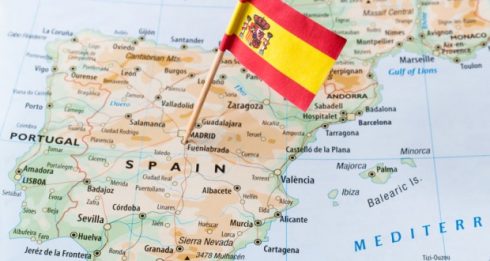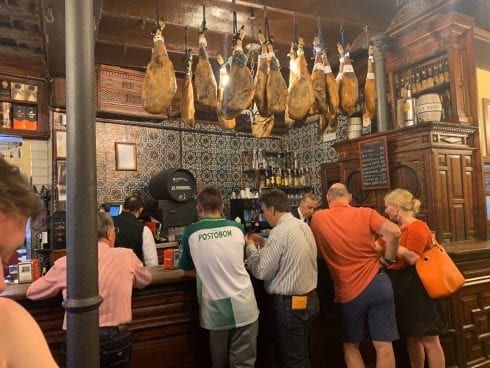AS non-European citizens, Americans are at a disadvantage when it comes to obtaining residency visas in Spain.
But there are many ways Americans can legally move to the sunny Iberia — some easier than others.
Generally speaking, non-European Union residents cannot legally stay in Spain for more than 90 days within a 180-day period without a visa.
Fortunately, there are various visa pathways available for Americans, each appealing to different demographics and circumstances.
- Pareja de Hecho
Perhaps the simplest and most common way to obtain long-term Spanish residency is by finding a Spanish partner.
Through what’s also known as a “civil union,” or “pareja estable” in some communities, foreigners can get residency through Pareja de Hecho if they can demonstrate that they live and share a life with a Spanish national.
Once registered as Pareja de Hecho, US citizens can receive what’s called a tarjeta comunitaria, which permits them to live and work legally in Spain for five years and travel freely throughout the European Union.
The process can be completed from within Spain on a standard 90-day tourist visa, meaning applicants can enter the country without a residence permit and obtain it once there.
Applicants should note, however, that each Spanish autonomous community has its own set of requirements.
In Madrid, for example, the couple must prove that they have lived together for at least 12 months.
But in the communities of Cataluña and Aragon, there is no minimum coliving requirement.
If the couple has children together, demonstration of coliving is not necessary.
But in all communities, applicants must be able to demonstrate that they are legally single (that is, unmarried) and that they are over the age of 18.
Additionally, one partner must be registered as a legal resident — or empadronado, as it’s known in Spain — in the autonomous community in which they are applying.

- Golden Visa
Officially known in Spain as the “Investor Visa,” the Golden Visa — referred to as such for its abundant privileges — is available to foreigners who are buying property or making a significant investment in the Spanish economy.
This can mean a number of things.
Golden visa applicants could make either a €2 million investment in Spanish public debt securities, or a €1 million investment in the Spanish stock market, a Spanish venture capital fund, or a deposit in a Spanish bank.
Purchasing real estate worth at least €500,000 would also qualify applicants for a Golden Visa, as would investment in a business project that generates jobs and significantly stimulates the local economy, or provides “significant contribution to scientific or technological innovation,” as the Spanish government’s web page reads.
Spouses and dependent children of the investor can also obtain residency through the Golden Visa.
As with other types of visas, applicants must submit a number of documents as part of their application, including the visa application form, a copy of their passport, a photo, an apostilled and translated criminal background check, and a certificate proving they’ve purchased private Spanish health insurance, among others.
And perhaps most importantly, applicants must provide proof of their investment in the Spanish economy.
What this looks like varies depending on the type of investment.
Examples include a declaration from the Ministry of Economic Affairs in the case of investment in the stock market, or a recently issued certificate from the land registry proving property ownership in the case of investment in real estate.
- Digital Nomad
An attractive option for remote workers seeking freedom to roam and work under the Spanish sun, the digital nomad visa is available to foreigners who are either self-employed or employed by a non-Spanish company and work exclusively using computers.
To qualify for a digital nomad visa, applicants must have either a university degree or a minimum of three years of work experience in their given field, and be able to prove the financial means to support themselves in Spain.
This amounts to 2x the monthly Spanish minimum wage, or about $2,300 per month.
For this visa, applicants have the option to either apply from inside Spain on a tourist visa, or from their local Spanish consulate in the US.
In the case of applying from the US, the applicant would initially receive a one-year residency permit, which they can then extend to three years once they arrive in Spain.
Just like other visas, in order to obtain the digital nomad visa, the applicant must provide an apostilled and translated criminal background demonstrating no criminal record, private health insurance, a photo, the visa application form, and proof of employment.
And if the contract is with a foreign company, the company must have existed since at least one year before the application is submitted, and must explicitly demonstrate that the applicant’s position allows for remote work.
If the applicant is a freelancer, their contract must show that their position can be done remotely.
It should be noted that unlike with other visas, Digital Nomad applicants must apply for a Spanish foreign identification number — called an NIE — before applying for the visa, a process with its own set of documents and appointments to complete.
According to the Spanish consulate’s website, the NIE is usually issued within two weeks, although it can be delayed.
- Study Visa
This option is popular among young people not yet tethered to a particular career or who don’t necessarily intend to stay in Spain permanently.
Each type of study visa includes different rules, stipulations, and application processes, but there is a range of activities that can qualify for a study visa, all of which follow a similar application process.
Perhaps the most straightforward way to get a study visa is to apply for a degree program at a Spanish university, known as the “General Student Visa.”
Any kind of full-time studies (more than 20 hours per week) at an accredited institution that issues degrees, diplomas, or certificates would qualify an applicant for a study visa.
This might be an Undergraduate or Master’s degree, Doctoral studies, a middle or high school exchange program, Spanish studies at a private language academy, or an internship program.
There are various private language academies throughout Spain that offer visa programs, in which the school sponsors a visa for prospective students willing to pay and take language classes throughout the year.
Pricing of these programs can vary, but it’s not uncommon that they exceed $2,000-3,000 per year.
The “internship visa” is available to people who have either completed a university degree within the past two years and are pursuing a professional development internship, or those who are currently pursuing an internship as part of their studies.
For General Student Visas — in addition to the aforementioned documents required for all types of visas — applicants must provide proof of enrollment in a full-time program and a valid letter of acceptance, the specifics of which can be found on the consulate’s study visa webpage.
With this kind of study visa, the Spanish consulate recommends applying as far in advance as possible, with applications being accepted up to six months before the start of the study program.
Another type of study visa can be obtained through what’s known as the North American Language and Culture Assistants Program (NALCAP).
Through this language exchange program — sponsored by Spain’s Ministry of Education — native English speakers are assigned to work in a Spanish primary or secondary school as a conversational assistant, working with Spanish teaching staff to deliver lessons in English.
NALCAP participants act as cultural ambassadors between the US and Spain, and are required to speak exclusively in English to students.
Programs typically run between October and May, with application cycles taking place in the spring and exist in towns in all of Spain’s autonomous communities.
As language assistants, NALCAP participants should expect to work between 14 and 16 hours per week.
It should be noted that while NALCAP participants can specify preferences in their applications, they may not have the final say in which city they end up in.
Finally, there exists a study visa program for those between the ages of 17 and 30 who want to work as an au pair.
An au pair lives in a Spanish family’s home and typically takes care of children in exchange for room and board.
For this type of visa the agreement between the applicant and the host family must not be a working agreement, meaning that au pair cannot receive a salary.
Applications must include a signed and notarized letter from the host family that includes the details of the agreement.
Additionally, applicants must also be enrolled in studies at a Spanish language school in Spain.
Because applicants are expected to be studying full time, most types of study visas require proof of financial means, which can be done in a number of ways.
In some cases, proof that living accommodations and costs are covered by the university or institution are acceptable, as is a notarized letter from a parent or guardian stating that they will cover all of the applicant’s living expenses.
There are also varying requirements for each type of visa depending on the desired length of stay.
Applications for visas lasting more than 180 days, for example, might require additional documents, such as certificates and criminal background checks.
READ MORE
- Russians still benefiting from Spain’s under-threat ‘Golden Visa’ scheme
- Digital nomads could work in idyllic spot next to beautiful Costa Blanca beach in Spain








